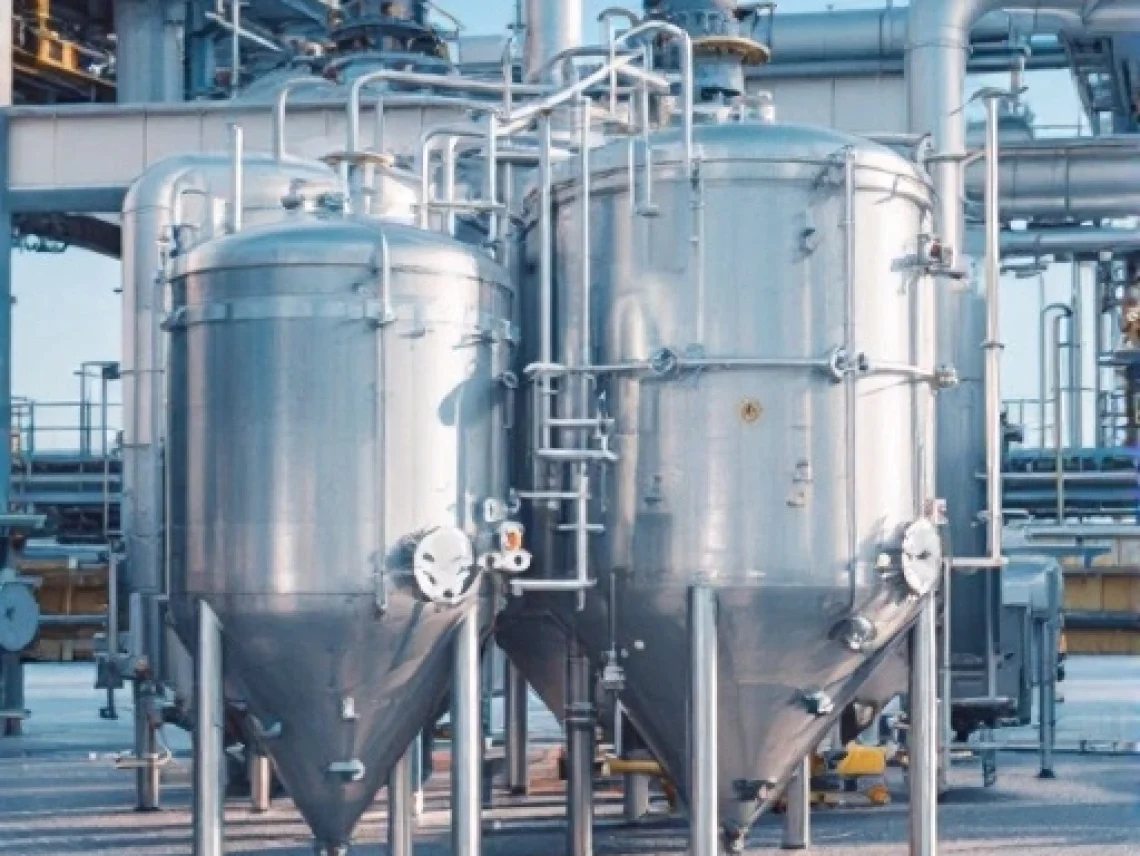
A standard vessel, often called a vessel or tank, is a container designed to hold liquids, gases, or solid materials typically at atmospheric pressure or with minimal pressure differentials. These vessels serve as storage containers across numerous industries and applications without the specialized engineering required for high-pressure containment.
Standard vessels perform essential functions in many facilities, including:
In everyday settings, common examples include water tanks, fuel storage tanks, mixing vats, and chemical storage containers. Industries often use standard vessels to hold water, fuels, oils, chemicals, food ingredients, and waste materials.
These vessels are typically constructed from materials suited to their specific application, including:
Standard vessels operate within relatively mild conditions. They generally function at or near atmospheric pressure (0-15 PSI), with limited temperature variations, and minimal stress factors. Their design primarily focuses on volumetric capacity and material compatibility rather than pressure containment. Without the stringent requirements of pressure containment, these vessels can be manufactured with thinner walls and simpler construction techniques, making them more economical for low-pressure applications.
A pressure vessel is a specialized container designed to hold gases or liquids at a pressure substantially different from ambient pressure, typically higher, but sometimes lower (in the case of vacuum vessels). This fundamental difference drives every aspect of their design, construction, and regulation.
The American Society of Mechanical Engineers (ASME) Boiler and Pressure Vessel Code provides the most widely recognized standards for pressure vessels. According to ASME Section VIII, pressure vessels are containers designed to operate at pressures exceeding 15 PSI. This code establishes comprehensive requirements covering:
Pressure vessels require ASME certification, including the application of an ASME stamp, which verifies compliance with these rigorous standards. This certification process involves inspection by authorized inspectors at various stages of construction.
The design of pressure vessels incorporates multiple considerations specific to containing pressure safely:
Safety features unique to pressure vessels include:
The engineering differences between standard vessels and pressure vessels are substantial and critical to their functionality and safety.
Material thickness in pressure vessels is significantly greater than in standard vessels, with calculations based on pressure ratings, temperature, material properties, and safety factors. While a standard water tank might use a 1/4-inch steel plate, a comparable pressure vessel might require 1-inch or thicker walls.
The strength requirements also differ dramatically. Pressure vessel materials must meet specific strength criteria defined by ASME, with certified mill test reports verifying material properties. These materials undergo rigorous testing, including:
Fabrication of pressure vessels involves specialized techniques:
Quality control for pressure vessels is far more rigorous, requiring:
Standard vessels are appropriate for:
Pressure vessels become necessary when:
Industry-specific applications for pressure vessels include:
The cost considerations highlight significant differences. Pressure vessels typically cost 3-10 times more than standard vessels of similar capacity due to:
The regulatory landscape for pressure vessels is extensive and stringent. Key governing bodies include:
Documentation requirements for pressure vessels include:
Inspection requirements are ongoing throughout a pressure vessel’s life:
Using the wrong vessel type can lead to catastrophic consequences:
Understanding the distinction between standard and pressure vessels is essential for safety, compliance, and operational efficiency. The differences extend beyond simple pressure ratings, encompassing design methodologies, material selection, fabrication techniques, and ongoing maintenance requirements. Making the correct choice between these vessel types represents a critical decision with significant safety, financial, and regulatory implications. As industries continue to evolve, the importance of proper vessel selection, certification, and maintenance remains fundamental to safe operations. Choosing the right vessel for your application and ensuring it meets all applicable standards protects both your personnel and your investment for years to come.
According to ASME Section VIII Division 1, any vessel operating above 15 PSI (1.03 bar) internal pressure must be classified as a pressure vessel and comply with pressure vessel codes. However, some jurisdictions may have different thresholds, particularly for specific applications like steam service, where even lower pressures might require pressure vessel construction.
Converting a standard vessel into a code-compliant pressure vessel is rarely practical or economical. The process would require:
Inspection frequencies vary based on service conditions, regulatory requirements, and insurance mandates. Typical schedules include:
Common pressure vessel materials include:
No, international standards differ significantly. Key differences include:
In the realm of industrial solutions, Red River emerges as a pioneer, offering a diverse range of custom-engineered products and facilities. Among our specialties is the design and production of Custom/OEM Pressure Vessels, meticulously crafted to meet individual client requirements, ensuring performance under various pressure conditions. Our expertise extends to the domain of prefabrication, where Red River leads with distinction.
The company excels in creating prefabricated facilities, modules, and packages, reinforcing its stance as a forerunner in innovation and quality. This proficiency is further mirrored in their Modular Skids offering, where they provide an array of Modular Fabricated Skid Packages and Packaged equipment. Each piece is tailored to client specifications, underlining their commitment to delivering precision and excellence in every project they undertake.